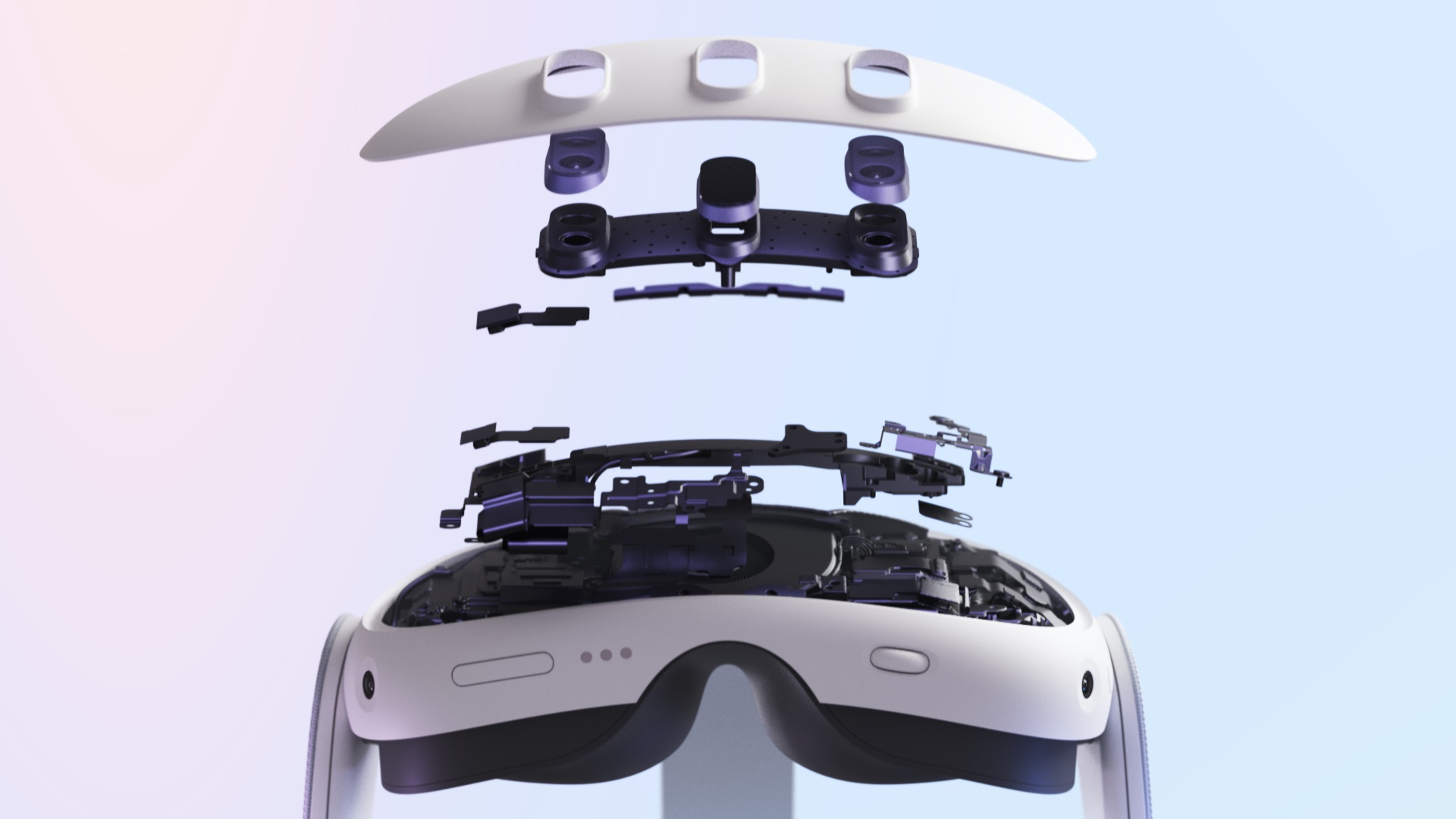Intel comes roaring back with new Lunar Lake chips to battle AMD and Qualcomm with all-day battery, AI, and serious gaming performance
Intel launched its latest mobile processor series, the Intel Core Ultra 200 series (known as Lunar Lake), this afternoon at an event in Berlin ahead of the start of IFA 2024.
The new system-on-a-chip (SoC) promises substantial performance increases over last year’s Intel ‘Meteor Lake’ Core Ultra 100 series, as well as competitive performance against archrival AMD and newcomer Qualcomm in the thin-and-light laptop market.
With the launch of Intel Core Ultra 200 series chips, laptop manufacturers like Lenovo, Asus, and others are starting preorders today, with delivery and in-store availability starting on September 24.
The new chips were originally announced at Computex 2024 back in June, and now we have a whole lot more detail on the architecture and performance of these chips. Lunar Lake’s microarchitecture has been completely rebuilt from the ground up, with a new focus on energy efficiency while also delivering the kind of gen-on-gen performance uplift that one would expect with a new processor generation.
As an example of this performance and efficiency marriage, Intel said that for chips running at 20W, which would be around the midrange of the laptop market, an 8-core single-threaded Lunar Lake chip would match the performance of a 22-core multi-threaded Meteor Lake chip. This is due to the tripled performance-per-thread that Lunar Lake’s new architecture provides over the last-gen Meteor Lake chips.
Serious performance across the board
Swipe to scroll horizontally
| Processor SKU | P-Cores | LPE-Cores | Cores/Threads | Max P-Core Turbo Frequency | Max E-Core Turbo Frequency | Total Cache |
|---|---|---|---|---|---|---|
| Intel Core Ultra 9 288V | 4 | 4 | 8/8 | 5.1 | 3.7 | 12 |
| Intel Core Ultra 7 268V | 4 | 4 | 8/8 | 5.0 | 3.7 | 12 |
| Intel Core Ultra 7 266V | 4 | 4 | 8/8 | 5.0 | 3.7 | 12 |
| Intel Core Ultra 7 258V | 4 | 4 | 8/8 | 4.8 | 3.7 | 12 |
| Intel Core Ultra 7 256V | 4 | 4 | 8/8 | 4.8 | 3.7 | 12 |
| Intel Core Ultra 5 238V | 4 | 4 | 8/8 | 4.7 | 3.5 | 8 |
| Intel Core Ultra 5 236V | 4 | 4 | 8/8 | 4.7 | 3.5 | 8 |
| Intel Core Ultra 5 228V | 4 | 4 | 8/8 | 4.5 | 3.5 | 8 |
| Intel Core Ultra 5 226V | 4 | 4 | 8/8 | 4.5 | 3.5 | 8 |
On the graphics side, Intel is promising up to 50% better graphics performance from the new Intel Xe2 graphics cores (the same architecture that will power Intel’s next-gen Battlemage desktop GPUs) over the Xe1 cores in Intel Meteor Lake. This includes better real-time ray tracing performance—which, when combined with Intel’s XeSS graphics upscaled, could make it possible to play ray-traced PC games at 1080p on low to medium graphics settings on an integrated GPU.
And we certainly can’t skip over the NPU performance of Lunar Lake, as Microsoft’s new Copilot+ AI PC push has been a major innovation in computing in 2024. In terms of NPU performance, Intel Lunar Lake gets up to 48 trillion operations per second (TOPS), which is among the fastest NPUs currently on the market (Qualcomm’s competing Snapdragon X Elite chip offers 45 TOPS) and Intel says that its real-world application performance in apps like Adobe Lightroom and GIMP’s Stable Diffusion plug-in is substantially better than its competitors.
These are laptops, after all, and maybe the most important feature of this chip is its battery life – and Intel says that a Lunar Lake laptop can get up to 20.1 hours of battery life, which is substantially more than any previous Intel-based laptop, and a stark contrast to the past few years where laptop battery life took a backseat to high-end performance.
Of course, none of this has been independently tested, so take everything with a grain of salt for now, but given the stakes for Intel, Lunar Lake is at least teasing a major show of force in the AI PC market.
Swipe to scroll horizontally
| Processor Number | Built-In GPU | Xe2 Cores | Max Frequency (GHz) | XMX Ai PTOPS | Neural Compute Engines | NPU AI TOPS | Memory Capacity | Processor Base Power (W) | Maximum Turbo Power (W) |
|---|---|---|---|---|---|---|---|---|---|
| Intel Core Ultra 9 288V | Intel Arc 140V GPU | 8 | 2.05 | 67 | 6x Gen4 | 48 | 32 | 30 | 37 |
| Intel Core Ultra 7 268V | Intel Arc 140V GPU | 8 | 2.0 | 66 | 6x Gen4 | 48 | 32 | 17 | 37 |
| Intel Core Ultra 7 266V | Intel Arc 140V GPU | 8 | 2.0 | 66 | 6x Gen4 | 48 | 16 | 17 | 37 |
| Intel Core Ultra 7 258V | Intel Arc 140V GPU | 8 | 1.95 | 64 | 6x Gen4 | 47 | 32 | 17 | 37 |
| Intel Core Ultra 7 256V | Intel Arc 140V GPU | 8 | 1.95 | 64 | 6x Gen4 | 47 | 16 | 17 | 37 |
| Intel Core Ultra 5 238V | Intel Arc 130V GPU | 7 | 1.85 | 53 | 5x Gen4 | 40 | 32 | 17 | 37 |
| Intel Core Ultra 5 236V | Intel Arc 130V GPU | 7 | 1.85 | 53 | 5x Gen4 | 40 | 16 | 17 | 37 |
| Intel Core Ultra 5 228V | Intel Arc 130V GPU | 7 | 1.85 | 53 | 5x Gen4 | 40 | 32 | 17 | 37 |
| Intel Core Ultra 5 226V | Intel Arc 130V GPU | 7 | 1.85 | 53 | 5x Gen4 | 40 | 16 | 17 | 37 |
A major opportunity for Intel at a particularly challenging time
After announcing major layoffs and cost-cutting measures across the company in recent months, Intel could really use a win.
With Qualcomm making a splash in the laptop market with its Snapdragon X series SoCs and AMD Ryzen AI 300 chips beating Intel to market, Intel is the last of the three chipmakers to release its AI laptop chips. Intel would really like you to believe that the best was saved for last, and the claimed performance for its new Lunar Lake chips is certainly compelling.
If Intel is able to deliver on the promises it’s made today, not only will it retain its status as the premier laptop chipmaker in a market it absolutely dominates by market share, but it will give itself a major shot in the arm as it heads into 2025 where competition from AMD and Qualcomm is expected to be fierce.
Fortunately, the more the three chipmakers fight it out to deliver better performance and efficiency, the better for the end user looking to upgrade their pandemic-purchased laptop in 2024 and 2025.
You may also like…
- Intel Lunar Lake CPUs could revolutionize ultrathin laptops
- Acer is set to show off new Copilot+ PCs with Intel’s Lunar Lake CPUs on September 4, kicking off the AI laptop wars in earnest
- Intel Lunar Lake CPUs could be revolutionary for thin-and-light laptops – but good luck buying one when they launch



